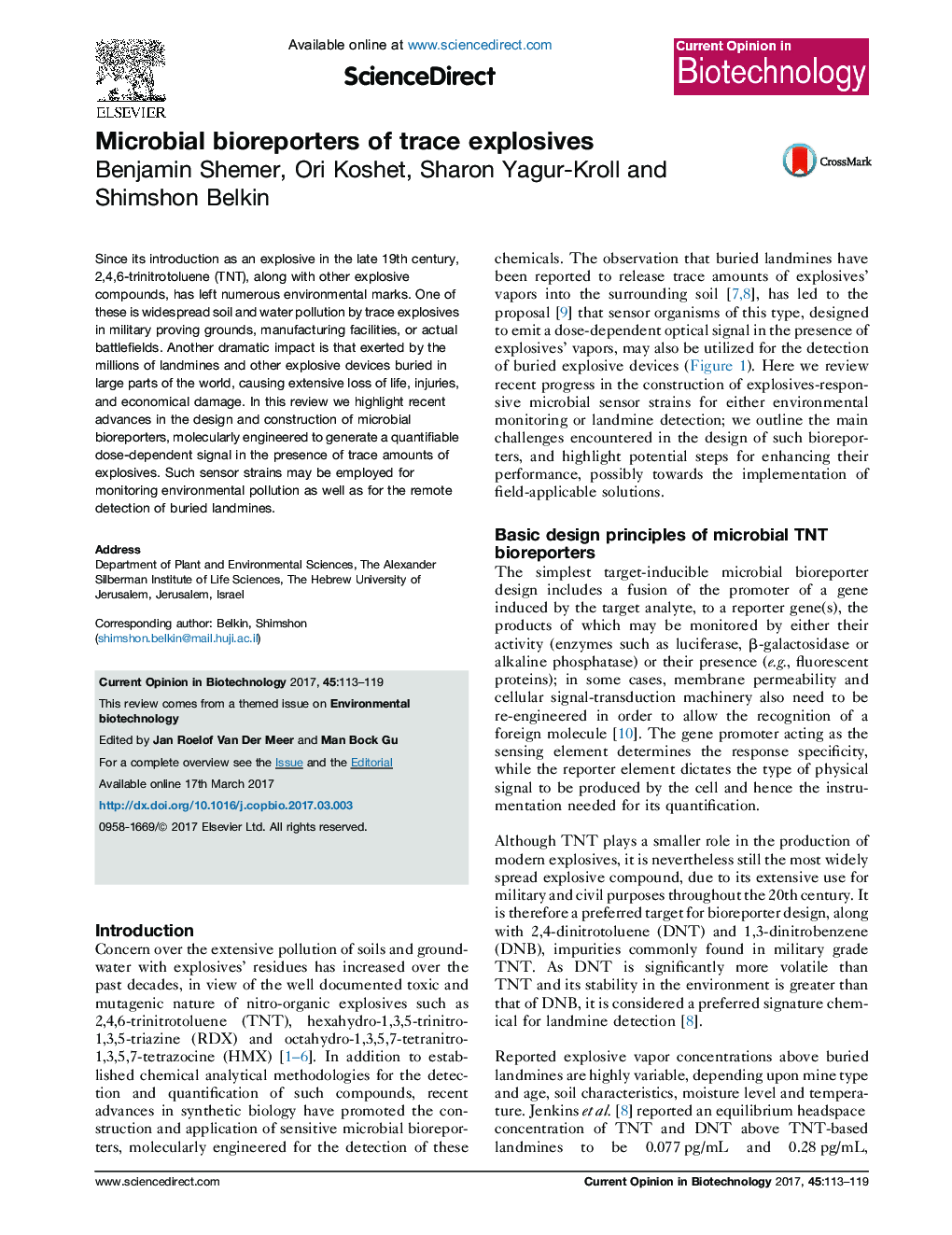| Article ID | Journal | Published Year | Pages | File Type |
|---|---|---|---|---|
| 6451689 | Current Opinion in Biotechnology | 2017 | 7 Pages |
â¢TNT is the most prevalent explosive compound among soil and water contaminants.â¢It is also the major component of most buried landmines.â¢Engineered microbial sensor strains can detect TNT and associated compounds.â¢In the future, such bioreporters may be used for the detection of buried landmines.
Since its introduction as an explosive in the late 19th century, 2,4,6-trinitrotoluene (TNT), along with other explosive compounds, has left numerous environmental marks. One of these is widespread soil and water pollution by trace explosives in military proving grounds, manufacturing facilities, or actual battlefields. Another dramatic impact is that exerted by the millions of landmines and other explosive devices buried in large parts of the world, causing extensive loss of life, injuries, and economical damage. In this review we highlight recent advances in the design and construction of microbial bioreporters, molecularly engineered to generate a quantifiable dose-dependent signal in the presence of trace amounts of explosives. Such sensor strains may be employed for monitoring environmental pollution as well as for the remote detection of buried landmines.
Graphical abstractDownload high-res image (166KB)Download full-size image
